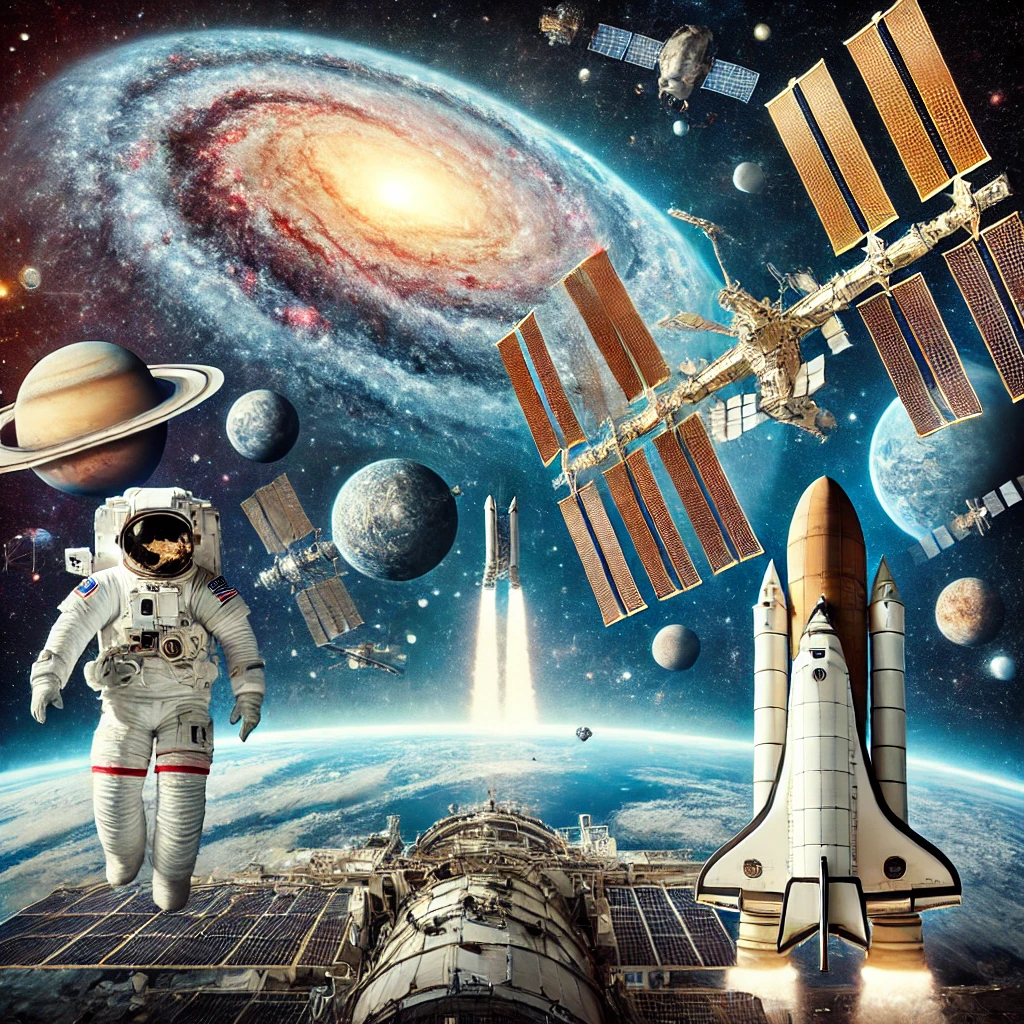Since the dawn of human civilization, people have looked to the stars with wonder and curiosity. Modern space exploration was made possible by the development of rocket technology in the 20th century, driven by scientific inquiry and geopolitical competition. Today, space exploration serves a multitude of purposes, from advancing scientific knowledge to national defense and economic development. This article explores the major historical milestones, technological advances, and future objectives of space exploration.
HISTORICAL MILESTONES
1. Early Developments (1930s-1950s)
Modern space exploration traces its roots to World War II, when Nazi Germany developed the V-2 missile, the first long-range rocket. After the war, the U.S. and the Soviet Union advanced their own missile programs, setting the stage for the space race and future human spaceflight.
2. The Space Race (1957-1975)
The Space Race began in 1957 with the Soviet launch of Sputnik 1, the first artificial satellite. In 1961, Yuri Gagarin became the first human to orbit Earth aboard Vostok 1. The U.S. achieved a landmark victory with the 1969 Apollo 11mission, landing humans on the Moon for the first time. Between 1969 and 1972, six Apollo missions explored the Moon and collected geological samples. During this period, interplanetary exploration also advanced, with the Mariner and Voyager missions capturing the first close-up images of Mars, Jupiter, Saturn, and their moons.
3. Space Stations and International Cooperation (1970s-Present)
The 1970s marked a shift from competition to cooperation. The U.S. launched Skylab (1973), its first space station, supporting human research in orbit. The 1975 Apollo-Soyuz Test Project symbolized the first international spaceflight mission. The International Space Station (ISS), operational since 2000, represents a major collaborative effort involving 17 nations, serving as a hub for scientific research and technological development in low Earth orbit.
4. Reusable Spacecraft and Commercialization (1981-2011)
The 1981 launch of the Space Shuttle introduced reusable spacecraft, enabling more frequent human spaceflight and the construction of the ISS. However, the Challenger (1986) and Columbia (2003) disasters prompted major safety reforms. The 2000s saw the rise of private space ventures, with companies like SpaceX developing cost-effective, reusable launch systems, transforming spaceflight from a government-driven effort into a commercialized industry.
These milestones showcase humanity’s journey from early rocketry to international cooperation and the rise of a commercial space economy, marking each era with technological, scientific, and geopolitical progress.
KEY APPLICATIONS OF SPACE EXPLORATION
Space exploration has significantly influenced science, technology, defense, and commercial industries, driving innovation and expanding humanity’s understanding of the universe.
Scientific Discovery
Missions like Mars rovers (Spirit, Opportunity, Curiosity, Perseverance) have explored Martian geology and searched for signs of life. The Cassini-Huygens mission (2004) studied Saturn and its moons, while the Hubble Space Telescopeprovided groundbreaking images of galaxies and the early universe, deepening our understanding of cosmic evolution.
Satellite Technology and Remote Sensing
Satellites support weather forecasting, disaster monitoring, and environmental observation. They track storms, monitor climate change, and assist in agriculture and environmental research. GPS and GLONASS provide essential navigation for military, commercial, and everyday use.
National Defense and Military Operations
Satellites play a crucial role in defense, providing surveillance, intelligence, and early warnings. During the Cold War, Corona satellites monitored Soviet missile sites, while satellite technology supported navigation and intelligence during the Gulf War (1991).
Commercial Applications
Telecommunications satellites enable global TV, internet, and radio services. Companies like SpaceX and Blue Origin are commercializing space travel and satellite launches, reducing costs and expanding private access to space.
Space exploration continues to shape science, industry, and defense, driving technological progress and transforming daily life on Earth.
CONCLUSSION
The evolution of space exploration reflects humanity’s enduring pursuit of knowledge, innovation, and progress. As international cooperation and private investment continue to grow, space is no longer the exclusive domain of governments. It has become a shared endeavor that fuels scientific breakthroughs, strengthens global connectivity, and opens new possibilities for future generations.




